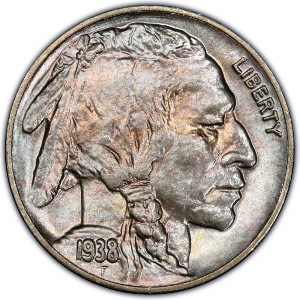
I’ve found Buffalo Nickels from time to time in my change or from coin rolls. I have to guess, 4 out of 5 of those nickels don’t show a date. Why is this and are they still worth something? First, let’s learn a little bit about Buffalo Nickels.
Brief History Of Buffalo Nickels
During the early part of the 20th century, the US Mint’s Chief Engraver, Charles Barber designs many of the coins in the United States. Barber designs the Liberty Nickel, Barber Dime, Barber Quarter, and Barber Half Dollar. The mint stopped minting the Morgan Dollar in 1904. So, the only non-Barber designed coin in 1912 was the Lincoln Cent.
President Theodore Roosevelt is looking at changing are the designs of US coins. The first non-gold coin to see this is the one cent coin. After 50 years of the Indian Cent, the Lincoln Cent comes out in 1909. With the Barber Dime, Quarter and Half Dollar beginning in 1892, they can’t change the design without an Act of Congress or until 1916, their 25th year. This leaves the nickel. By 1912, the Liberty Nickel is in its 30th year putting it 5 years past asking Congress for a change. This gives President William Howard Taft’s administration the opportunity to change the nickel design.
Determining The Initial Design
Barber looks to design a new nickel around the time that the Lincoln Cent was first minted. He designed a pattern that would had put George Washington on the obverse. This was going to happen until Mint Director Frank Leach left in November, 1909, making Abram Andrew the new Director. Andrew did not like the new Lincoln Cent design and wants to get Congressional approval to change it. He had seen a design by sculptor James Earle Fraser. Fortunately, Abe’s face remains on the penny. So, Fraser starts designing a new nickel instead.
By December, 1912, Fraser’s new design with a profile of an American Indian on the obverse and an American Bison on the reverse gets approval. There is opposition from the Hobbs Manufacturing Company from Worcester, MA who create the device inside vending machines to determine whether the coin put in the slot is real or counterfeit. Of course, they have issues with the new nickels and want changes made before it is minted. This would go all the way to President Taft himself. Taft would only be in office for 2 more weeks and did not want to stop the new nickel from being minted.
On February 18, 1913, the first forty “Indian Head Nickels” are given to Native American chiefs on February 22nd at the National American Indian Memorial in Staten Island, NY. The Indian Head Nickel, or Buffalo Nickel, is finally in circulation on March 4, 1913, the same day as the inauguration of President Woodrow Wilson.
Change To Buffalo Nickels Design


Chief Engraver Barber notices that there are many more dies used for the new Buffalo Nickel than the previous Liberty Nickel. He proposes changes, the biggest revision being changing the mound that the buffalo stands on to just a line showing flat ground. The nickels with the mound are Type I and the line as Type II.
Also the date and denomination wear quickly. “FIVE CENTS” is larger and the numbers on the year are thicker. Neither change reduces the wear on the coin. There was never a permanent solution that would help keep the date while in circulation. This is one of the reasons that 1938 will be the last year of the Buffalo Nickel.
Key Dates Of Buffalo Nickels

The 1926-S is not only the least made Buffalo Nickel at 970,000, but is also the only Buffalo Nickel to have a mintage under one million. From the 2018 Red Book, the value of this Buffalo Nickel starts at $25 in Good Condition, $375 in Very Fine, $900 in Extra Fine, and if you’re looking for a Mint State (Uncirculated) piece, don’t plan on paying less than $4,000.
Other key dates include the 1921-S, 1924-S and 1931-S, but if you’re looking for the most valuable Buffalo Nickel, that would be the 1913-S Type II ranging from $340 in Good Condition to $750 in Almost Uncirculated Condition.
A popular error coin is the 1937-D Buffalo Nickel with 3 legs. One of the front legs on the buffalo is missing making it valuable, starting at $550 in Good Condition.
Unfortunately, The Buffalo Nickel Was Flawed From the Beginning
It is sad because I think this was a great design, but details on the coin would wear down quickly, That’s why most of the Buffalo Nickels I’ll find today have no dates. Without a date, it is only worth five cents. I still like Buffalo Nickels. Would you consider collecting them?
